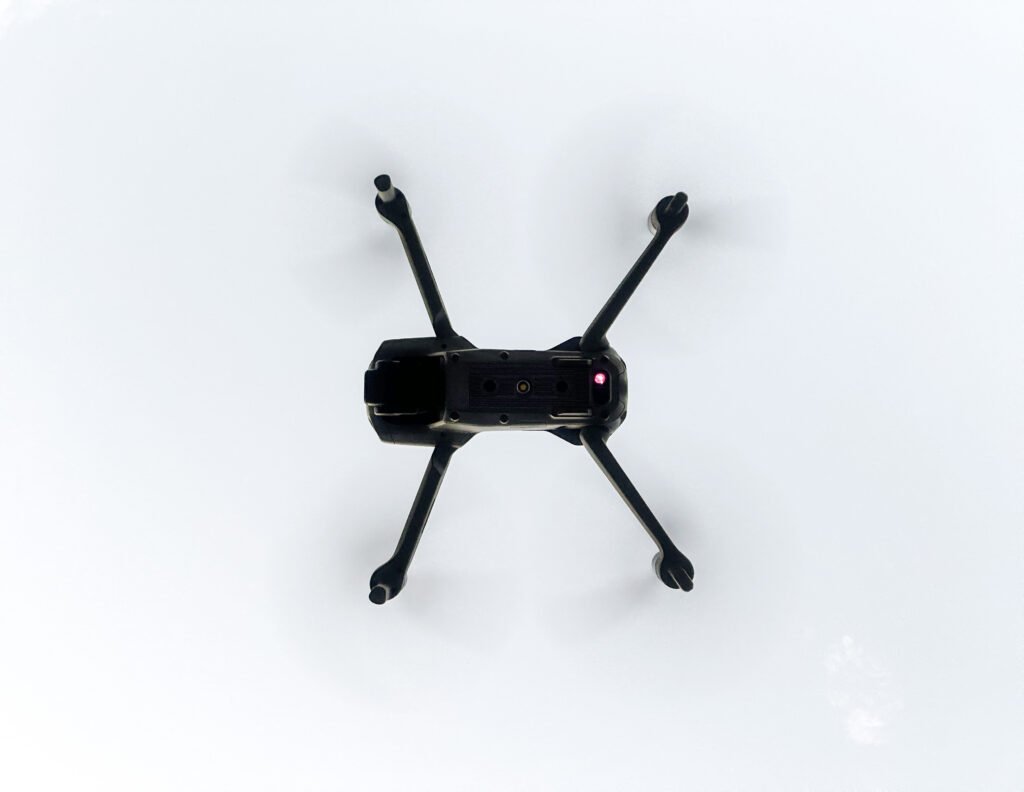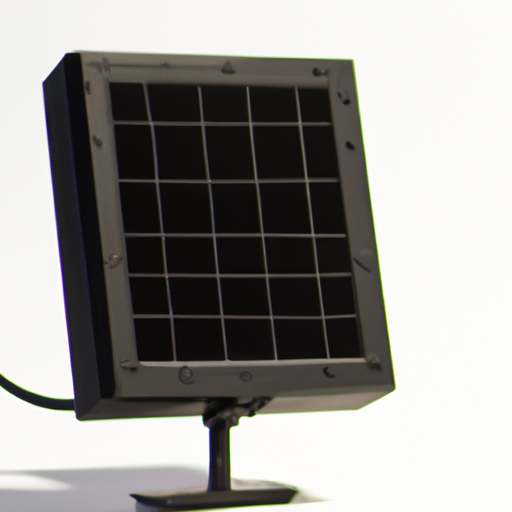Imagine having a wireless video monitor that allows you to keep an eye on your home or office from anywhere. It’s a convenient tool, but have you ever wondered how it stays powered without any wires? In this article, we will explore the different ways to power a wireless video monitor, providing you with the knowledge you need to make the most out of this cutting-edge technology. From battery options to advanced power solutions, we will uncover the secrets behind powering a wireless video monitor.
Types of Wireless Video Monitors
When it comes to wireless video monitors, there are several types available on the market. Understanding the different options can help you choose the one that best suits your needs. Here, we will explore three main types of wireless video monitors: battery-powered monitors, AC-powered monitors, and solar-powered monitors.
Battery-Powered Monitors
Battery-powered monitors are a popular choice for those who need to monitor video footage without a direct power source. These monitors run on rechargeable batteries, which offer several benefits. One significant advantage is their portability. You can easily move them around without worrying about finding a power outlet.
Benefits of Battery-Powered Monitors
Battery-powered monitors offer flexibility and convenience. They are perfect for on-the-go monitoring or situations where running a power cable is not feasible. Whether you are conducting outdoor surveillance or need to monitor an event in a remote location, battery-powered monitors are an excellent solution.
Battery Capacity and Runtime
When considering battery-powered monitors, it is essential to consider the battery capacity and runtime. Battery capacity refers to the amount of energy the battery can store, while runtime indicates how long the monitor can operate on a single charge. Higher battery capacity will generally result in longer runtime, ensuring uninterrupted monitoring.
Recharging Options
To keep your battery-powered monitor functioning, you will need to recharge the batteries regularly. Most battery-powered monitors come with their own charging cables and adapters. Some even have the option for solar charging, which we will discuss in more detail later. It is important to familiarize yourself with the recharging options available for your particular monitor.

This image is property of images.pexels.com.
AC-Powered Monitors
AC-powered monitors, also known as wired monitors, are connected directly to a power source. These monitors do not rely on batteries, making them a dependable choice for continuous monitoring.
Direct Power Supply
AC-powered monitors require a direct power supply from an electrical outlet. This means that you need to position the monitor near an outlet or install additional wiring to reach the desired location. While this may limit the mobility of the monitor, it ensures a constant and reliable power source.
Power Adapters
Power adapters are commonly used with AC-powered monitors to convert AC power to DC power, which is required by the monitor. These adapters often come with the monitor itself and are designed to match the specific requirements of the device. Using a power adapter allows for a seamless connection to the power source.
Benefits and Limitations
AC-powered monitors have distinct advantages. They offer uninterrupted monitoring without the need for battery recharging. Additionally, they can handle intensive usage without the concern of battery life. However, the primary limitation of AC-powered monitors is their reliance on a power source. This can limit their versatility, as they need to be placed close to an outlet.
Solar-Powered Monitors
Solar-powered monitors are an eco-friendly and energy-efficient solution for wireless video monitoring. These monitors harness the power of the sun to provide continuous operation.
Harnessing Solar Energy
Solar-powered monitors utilize solar panels to convert sunlight into electrical energy. These panels consist of photovoltaic cells that absorb sunlight and generate electricity through a process called the photovoltaic effect. This renewable energy source makes solar-powered monitors an environmentally conscious choice.
Solar Panels and Power Storage
Solar panels are typically installed on the monitor itself or placed nearby to capture maximum sunlight. The energy generated by the solar panels is stored in batteries, which power the monitor during periods of low sunlight or at night. This ensures uninterrupted video monitoring while reducing reliance on the electrical grid.
Advantages and Considerations
One of the major advantages of solar-powered monitors is their sustainability. They rely on a renewable energy source, reducing the carbon footprint associated with traditional power sources. Additionally, solar-powered monitors offer increased flexibility, as they can be placed in locations without easy access to electrical outlets. However, it is important to consider factors such as the availability of sunlight and the size of the solar panels when opting for this type of monitor.

This image is property of images.pexels.com.
Power Requirements
Understanding the power requirements of wireless video monitors is crucial to ensure proper functioning and optimal performance.
Voltage and Amperage Considerations
Wireless video monitors typically require a specific voltage and current to operate correctly. Voltage refers to the electrical potential difference between two points, while amperage measures the flow of electrical current. It is essential to check the voltage and amperage specifications provided by the manufacturer to ensure compatibility with your power source.
Power Consumption of Video Monitors
Power consumption refers to the amount of electrical energy a device utilizes during operation. Wireless video monitors come with different power consumption ratings, depending on their features and functionality. It is essential to consider the power consumption of the monitor when choosing a power source.
Calculating Power Needs
To determine the power needs of your wireless video monitor, you need to consider both the power consumption and the desired runtime. Calculating the power required involves multiplying the power consumption by the duration of operation. This will help you select an appropriate power source with sufficient capacity to meet your needs.
Power Connection Options
Wireless video monitors offer various power connection options, allowing you to choose the most convenient and practical solution for your setup.
Wireless Charging
Wireless charging, also known as inductive charging, enables you to power your video monitor without the need for cords or cables. This technology utilizes electromagnetic fields to transfer energy between a charging pad or dock and the monitor, eliminating the need for physical connectors.
USB Power
Many wireless video monitors also offer USB power input options. These monitors can be connected to a computer or any device with a USB port for power supply. USB power is a convenient option, especially for those who frequently travel or have limited access to traditional power sources.
DC Power Connectors
DC power connectors are commonly used with AC-powered monitors or monitors that come with an external power adapter. These connectors allow for a secure and reliable connection between the monitor and the power source. It is important to ensure the correct polarity and voltage compatibility when using DC power connectors.

This image is property of images.pexels.com.
Battery Technologies
Different battery technologies are utilized in wireless video monitors to provide efficient power storage and longer runtime.
Lithium-Ion Batteries
Lithium-ion batteries have become increasingly popular due to their high energy density, longer lifespan, and ability to hold a charge for extended periods. These batteries are lightweight and offer excellent performance, making them ideal for portable video monitors.
Nickel-Cadmium Batteries
Nickel-cadmium batteries, also known as NiCd batteries, have been commonly used in the past but are being replaced by more advanced technologies. They have a lower energy density compared to lithium-ion batteries and are prone to self-discharge. However, they still find use in certain applications due to their ability to withstand extreme temperatures.
Nickel-Metal Hydride Batteries
Nickel-metal hydride batteries, or NiMH batteries, are an alternative to nickel-cadmium batteries. They offer a higher energy density, longer lifespan, and superior environmental friendliness. NiMH batteries have become a popular choice for wireless video monitors due to their performance and lower cost compared to lithium-ion batteries.
External Power Sources
In addition to internal batteries and direct power connections, wireless video monitors can be powered by external sources, providing additional flexibility and extended usage.
Power Banks
Power banks, also known as portable chargers, are compact devices that store electrical energy and can be used to charge wireless video monitors on the go. These power banks usually have USB outputs, allowing for easy connection to the monitor. They are an excellent solution for outdoor monitoring or situations where access to electrical outlets is limited.
Wall Outlets
Traditional wall outlets provide a reliable and continuous power source for wireless video monitors. If you have access to an electrical outlet, you can plug in your monitor directly to ensure uninterrupted monitoring. Wall outlets are a popular choice for indoor setups or areas with easy access to power.
Generator or Inverter
For situations where a traditional power source is not available, a generator or inverter can be utilized to power wireless video monitors. These devices convert alternative energy sources, such as gasoline or solar power, into electrical energy that can be used to charge the monitor.
Considerations for Portable Video Monitors
Portable video monitors require a different set of considerations to ensure functionality and ease of use on the go.
Compact and Lightweight Solutions
When opting for a portable video monitor, it is crucial to choose a compact and lightweight option. This allows for easy transport and setup, whether you are conducting surveillance or monitoring an event. Look for monitors that offer a balance between performance and portability.
Extended Battery Life Options
To maximize the usability of a portable video monitor, consider models that offer extended battery life options. Some monitors come with higher capacity batteries or additional battery packs that can be attached for prolonged runtime. This ensures you can monitor for extended periods without the need for frequent recharging.
Power-Saving Features
Power-saving features can significantly enhance the usability of portable video monitors. Look for monitors that offer functionalities such as auto-sleep mode, adjustable screen brightness, or motion detection activation. These features help conserve battery power, allowing you to use your monitor efficiently.
Maintenance and Safety
Proper maintenance and safety precautions are essential when using wireless video monitors to ensure longevity and prevent accidents.
Regular Battery Maintenance
Regular battery maintenance is crucial for the optimal performance of wireless video monitors. It is important to follow the manufacturer’s guidelines on battery care, such as avoiding overcharging or deep discharging, storing the monitor in a cool and dry place, and periodically checking the battery health.
Preventing Power-Related Accidents
To ensure safety while using wireless video monitors, it is important to follow standard electrical safety practices. This includes using appropriate power cords and connectors, avoiding water or moisture exposure, and keeping the monitor away from flammable materials. Additionally, it is crucial to use certified power sources and adapters to reduce the risk of power-related accidents.
Emergency Backup Plans
Having an emergency backup plan is essential in case of power outages or unforeseen circumstances. Consider having spare batteries, power banks, or alternative power sources readily available to maintain video monitoring during emergencies.
In conclusion, powering a wireless video monitor requires careful consideration of the monitor type, power requirements, and available connection options. Whether you opt for a battery-powered, AC-powered, or solar-powered monitor, understanding the benefits and limitations of each type will help you make an informed decision. Remember to prioritize safety and maintenance to ensure optimal performance and longevity of your wireless video monitor.

Meet Penny Sterling, the editor behind the captivating content of our blog, “Wireless Video Monitor.” With a background in electrical engineering and a deep passion for technology, Penny has become a leading authority in the world of wireless video monitors. Her ability to distill complex concepts into accessible articles has made her a trusted guide for both tech enthusiasts and newcomers to the field. Penny’s unwavering commitment to research and staying up-to-date ensures that “Wireless Video Monitor” remains an authoritative source for reliable information. Get ready to embark on a journey of wireless video monitor exploration with Penny Sterling as your knowledgeable and dedicated mentor.
